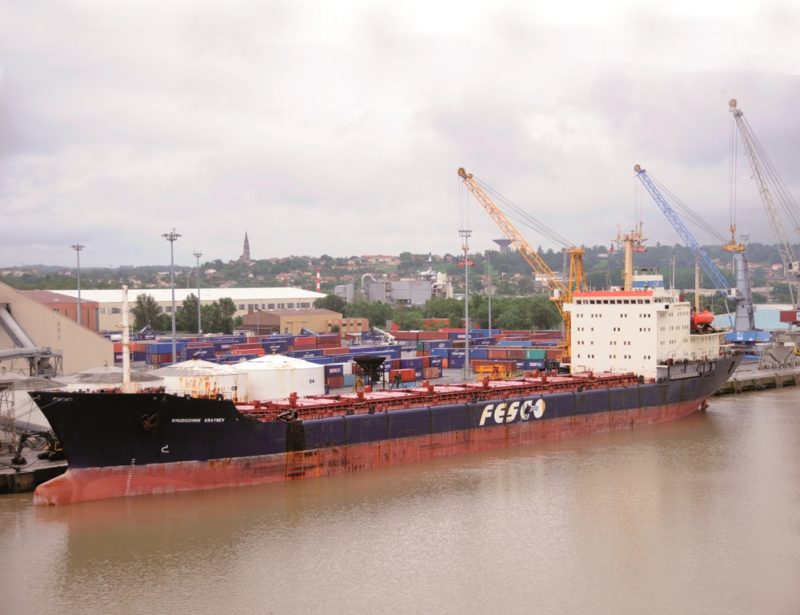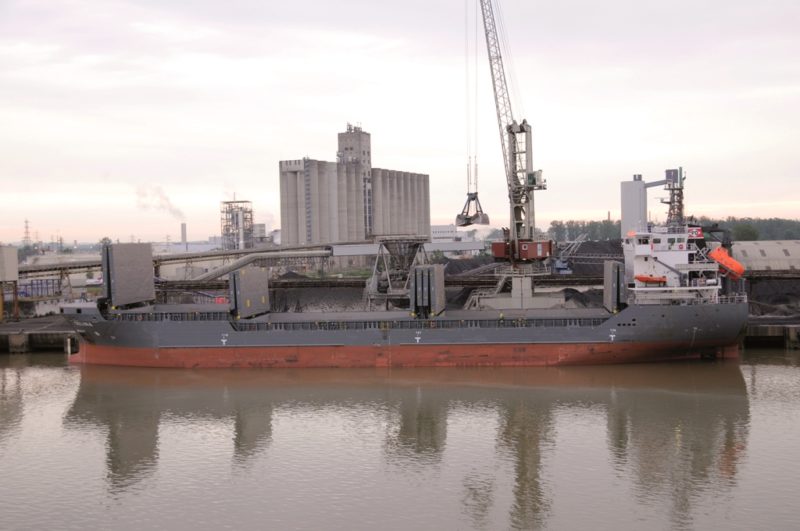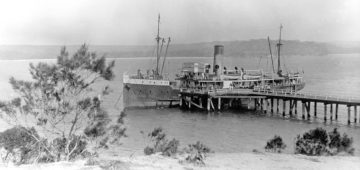
The Port of Bordeaux consists of seven ports or outports on the Gironde estuary in Pauillac, Le Verdon, Blaye, Ambes, Grattequina Terminal, Bassens and Bordeaux. The total cargo throughput per annum today of all seven ports is between 7.0 million and 8.0 million tonnes per year. After Marseille, Bordeaux is the oldest French trading port, it has exported wine from Roman times and has always based its trade on wines and agricultural products. English rule between 1154 and 1453 AD saw merchants making immense fortunes from wine sales to England. After the discovery of the New World in 1492 by Cristopher Columbus, Bordeaux took advantage of its Atlantic position on the Bay of Biscay to diversify and extend its wine markets. The barrels of wine were transported down the Dordogne and Garonne rivers to Bordeaux in small craft propelled by oars and wind driven by square sails.
Today, the Bordeaux region produces over 60 million cases of wine per year. Some of the most celebrated wines in the world are made in and around Bordeaux, which is the largest fine wine producer in the world with many of them taking their names from towns in the region e.g. St. Emilion, Medoc, Sauternes, Pomerol, Margaux and the fortified and distilled wine known as Cognac brandy as well as liqueurs. The many wine chateaux of the Aquitaine and Charente regions near the Garonne and Dordogne rivers hold wine tastings during the summer months, and there are wine tasting sessions in the summer in the village of St. Emilion in its shops.
Bordeaux produces both white and red wines, but it is particularly noted for its red wines, growing high class, more expensive Cabernet Sauvignon grapes on the left bank of the Garonne to the west of Bordeaux. Merlot and Cabernet Franc based wines are grown on the right (east) bank, and there are also some very good white wines mainly from the Pessac and Graves villages to the south and south east of Bordeaux, with most white wines based on Sauvignon Blanc grapes in both the sweet and dry forms.

Wine is exported from Bordeaux by wine tanker, and also in large wooden cases containing hundreds of bottles stuffed into containers. The extent of the wine growing is massive, with 287,000 acres of vineyards, 57 appellations, ten thousand wine growing estates (chateaux), 13,000 grape growers and 6,300 wine producers. The Premier Cru (first growth) red wines include four types from Medoc, and one from Graves known as Chateaux Haut-Brion, and were established by the Bordeaux Wine Official Classification of 1855. Bordeaux is home to the largest wine fair in the world, Vinexpo, and the wine industry in the Bordeaux area is worth 14.5 Euro billions per year, with premium wines such as Chateaux de Cartillon retailing from £12.99 per bottle and other premium wines being more expensive. No fewer than twenty one bottles of Bordeaux wine are sold every second to countries all across the world.
Bordeaux is known for its very beautiful Gothic Cathedral of Saint Andre, consecrated by Pope Urban II in 1096, but only a wall remains in the nave of the original Romanesque building. The Royal Gate is from the early 13th century, while the rest of the building is from the 14th and 15th centuries. The Church of the Holy Cross (Eglise Sainte Croix) lies on the site of a 7th century abbey destroyed by the Saracens but rebuilt under the Carthaginians and again destroyed by the Normans in 845 and 864 AD. It is annexed to a Benedictine abbey founded in the 7th century and was built in the late 11th and early 12th centuries. The most ancient church in Bordeaux is the Basilica of Saint Seurin, built in the early 6th century on the site of a paleo-christian necropolis. It has an 11th century portico with the apse and transept from the next century. The 13th century nave has chapels from the 11th and 14th centuries, and the ancient crypt houses sepulchres of the Merovingian family.

Sign-up today to read the full article!
Simply click below to sign-up and read the full article, as well as many others, instantly!






Comments
Sorry, comments are closed for this item